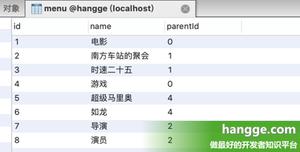浅谈为什么要使用mybatis的@param
起因
我们先来看一个报错
报错很简单,参数 start 没找到。
我是在实现一个 API 接口时发现了一个问题,当我不使用 @Param 标签时,mybatis 是不认识哪个参数叫什么名字的,尽管我定义了 (long start,long end) 它仍然不认识。在这个接口上,我希望根据前端传来的参数,查找指定范围的数据,例如:我想搜索第二页的数据,假设一页20个,那么搜索的范围就是21-40,于是就会调用接口中的 getTypeListByRange 来查找对应 mapper 的 SQL 语句。
public interface TypeDao {
Type getTypeByid(long id);
List<Type> getTypeListAll();
List<Type> getTypeListByRange(long start,long end);
}
解释 @Param
org.apache.ibatis.annotations.Param 当映射器方法需要多个参数时,这个注解可以被用于:给映射器方法中的每个参数来取一个名字。否则,多参数将会以它们的顺序位置和SQL语句中的表达式进行映射,这是默认的。
语法要求:若使用@Param(“id”),则SQL中参数应该被命名为:#{id}。
使用
Dao 层
import org.apache.ibatis.annotations.Param;
import com.caeser.upmovie.entity.Type;
public interface TypeDao {
Type getTypeByid(long id);
List<Type> getTypeListAll();
List<Type> getTypeListByRange(@Param("start")long start,@Param("end")long end);
}
Mapper
<select id="getTypeListByRange" resultType="com.caeser.upmovie.entity.Type">
SELECT
ID,
NAME,
CREATE_TIME,
UPDATE_TIME
FROM
upm_type
LIMIT
#{start},#{end};
</select>
单元测试
public class TypeTest extends BaseTest{
@Autowired
private TypeDao typeDao;
@Test
public void testDao(){
List<Type> typeList1=typeDao.getTypeListByRange(1, 4);
for(int i=0;i<typeList1.size();i++){
System.out.println(typeList1.get(i).getName());
}
}
}
结果
总结
当 Dao 层传递参数为多个参数时,为了规范,必须使用 @Param 给参数命名。这里需要注意,使用的是 mybatis 的 param 来命名。
以上是 浅谈为什么要使用mybatis的@param 的全部内容, 来源链接: utcz.com/z/357752.html





